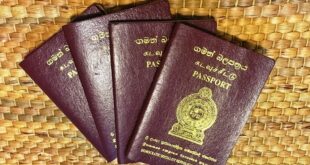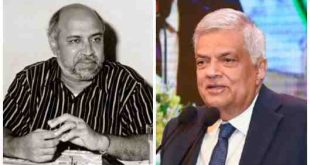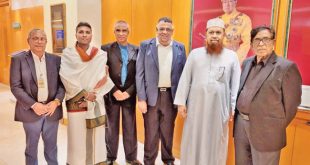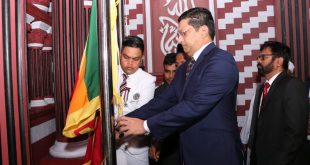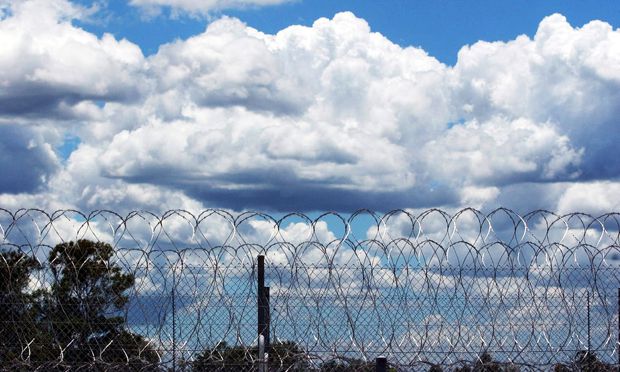
The image was designed to shock: dozens of Muslims prostrated towards Mecca behind the razor wire of Goulburn’s Supermax jail.
“Jailhouse jihad,” the headline blared above a story warning that Australia’s prisons were becoming a hotbed of extremism.
It’s a theme that appears sporadically in the national media. One that, intentionally or otherwise, conflates in the reader’s mind prison-based conversions to Islam and radicalisation.
The truth is, as ever, infinitely more complicated.
Academics, imams and prison workers widely agree that conversions to Islam are now commonplace in Australia’s prisons. But they say the risk of radicalisation, while present, has been overblown.
The sensational headlines risk clouding an important discussion. Can prison conversions be a force for good? And why is it that inmates, at their lowest ebb, are turning to Islam?
Michael Kennedy, a veteran detective of 20 years, knows more than most about the subject. Since leaving the New South Wales organised crime squad he has studied Islam and incarceration extensively as an academic at the University of Western Sydney.
Kennedy is not a man of faith. But he has come to understand crime, and criminals, from two very distinct perspectives.
Kennedy has maintained contact with a “lot of good crooks” met in his former life. They exchange letters now and again. His correspondents drift in and out of jail, giving him a unique insight into the place of religion in prison.
“They’re pretty easy to talk to. One in particular I’m thinking of, I said [name removed], ‘did you get religious?’”
“He said ‘Oh no, but a lot of people do, it’s the way you get by. It’s the way you’re able to deal with what’s happened to you.’
“You’re isolated from all the people that you know in your life, whether good people or bad. You need to connect with someone about something.”
In this reading, the discovery of religion is essentially a coping mechanism, and a way to forge a shared identity in the dog-eat-dog world of prison.
Kennedy says more often than not it’s a positive influence, which can open a pathway to rehabilitation. It gives inmates some semblance of structure and provides a motive to stay away from drugs and alcohol.
“I actually don’t think it’s a bad [coping mechanism], but some would argue that it is,” he said. “If you think about it, from my point of view, it gives them a bit of hope.”
Data on conversions behind bars to any religion is virtually nonexistent.
The best publicly available information comes from a 2013 census of NSW prisoners, which suggests Muslims remain a minority, although one that is overrepresented. The census showed Muslims accounted for about 9.3% of the state’s prison population compared with 3.2% of the NSW population.
The last concern I have with these brothers inside is them using religion in the wrong way
Anecdotal evidence suggests conversions are frequent.
Robbie Maestracci, a community outreach worker with the Islamic Council of Queensland, pays weekly visits to Muslim inmates in the greater Brisbane area. He believes there is a prominent trend of conversions to Islam among detainees.
“Without a doubt there is … We’re constantly being made aware of new names of people who have embraced Islam or names of people who are wanting to embrace Islam. At least every two weeks, there’s another name or two being added to our list,” Maestracci says.
He says prison, devoid of social and financial pressures, encourages reflective thinking.
“When these men are forced to sit and take a look at their actions, I think there’s a lot of repenting and remorse for things that have been done, and in that process, I guess, begins the journey of seeking forgiveness from people and a higher power.”
Maestracci’s role involves providing mentorship to Muslim prisoners during detention and after release, including converts and those considering conversion. “We do as best as we can to make sure they find a way to find work, live a normal life, stay out of trouble and stay out of jail.”
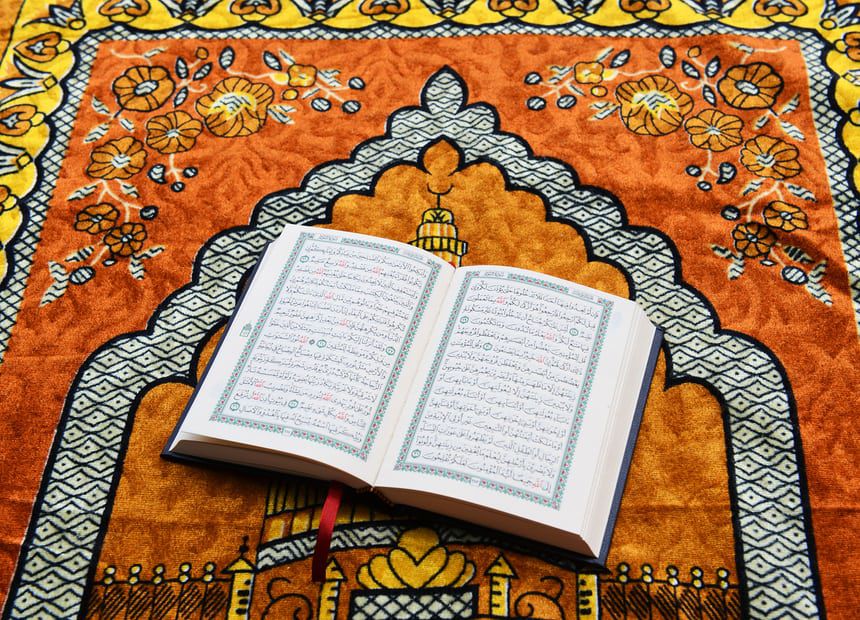
Maestracci is not worried about the radicalisation of Muslim prisoners and believes this fear is “mostly blown out of proportion”.
“The last concern I have with these brothers inside, based on my regular dealings with them, is them becoming radicalised or extreme or using religion in the wrong way … I just don’t see signs of that being a real issue,” he says.
Some experts have looked further afield to understand the dynamics of Islamic conversion in prisons. Two prisons near the Philippines capital of Manila serve as a compelling case study for Australian correctional authorities.
Conditions in the prisons – Metro Manila district jail and the New Bilibid prison – are a world away from those in Australia. They are marked by intense overcrowding, turf wars between prison gangs, overstaying inmates and hundreds of terrorist offenders, largely from the Abu Sayyaf group and Jemaah Islamiyah.
For the past 10 years, Australian National University researcher Clarke Jones has been studying the two prisons, and others in about nine south-east Asian nations. He has sought to understand how the prison environment interacts with conversion and potential radicalisation. The findings, soon to be published in a book, are striking.
Jones found both conversion and radicalisation became more likely in harsher prison conditions. But the more devout an inmate, the less likely they were to become radicalised or misbehave behind bars.
The findings reveal shades of grey in the debate about prison radicalisation.
Religion is not the sole factor in radicalising inmates, Jones found. Instead, it is caused by a complex array of factors, including the characteristics of the prison environment, inmate culture, social barriers and the basic need for survival.
“I would certainly suggest that, looking at what’s happened at the Philippines and also other countries around the world, that the harsher the conditions, the more hostile the conditions, the greater the chance of prison radicalisation,” Jones says.
“And often it’s not necessarily to go and blow up someone, it’s to ‘get back at the system, get back at the bastards who locked me up’.”
Jones agrees it is unhelpful to exaggerate the risk of prison radicalisation. He says there are no real examples of Australians becoming radicalised behind bars and going on to launch attacks.
“There are very few that you could put your hand on to suggest that prison radicalisation was the cause of a terrorist act – very few,” he says.
Most of those who convert to Islam in prison lose their faith once they are released and back with their usual social circles, both Jones and Kennedy say. But Jones warns against complacency.
“It’s a danger in saying [radicalisation] doesn’t happen,” he says.
The NSW government says the number of inmates in its system with suspected radicalised or extreme views has increased “slightly”, but only in line with broader increases in its general prisoner population. Such inmates are housed in the Supermax’s high risk management correctional centre, a maximum security unit within the sprawling correctional complex in Goulburn, south-west of Sydney.
The state government is investing about $47m in three years to counter terrorism and violent extremism in its prisons. The money will go to disengagement programs for inmates identified as at risk of radicalisation.
A federal disengagement program, the “proactive integrated support model”, has also included 15 NSW inmates since it began in 2016.
“In the past few years Corrective Services NSW has placed a stronger focus on identifying inmates at risk of being radicalised,” a corrective services spokeswoman said.
“Inmates suspected of, or identified as, holding radical views are closely monitored by experienced and well trained staff, and moved away from other inmates if necessary.”
But Jones believes there are risks in segregating already radicalised offenders from the general prison population, an approach not adopted in Victoria, where they are dispersed.
A spokeswoman for Corrections Victoria said it disperses prisoners “wherever practicable” and “according to their assessed level of risk and individual needs”.
“This approach aims to prevent extremist views being continually reinforced by like-minded prisoners,” she said.
“Instead, these prisoners are encouraged to confront their extremist ideologies and to learn to live respectfully with others from different backgrounds and faiths.”
She said any prisoner who attempted to radicalise others was swiftly placed in a more restrictive environment to limit their influence.
A similarly divergent approach is taken in the Philippines, where prisons either integrate terrorist inmates with the general prison population or segregate them.
Jones says concentrating terror offenders in the same wing is counterproductive and dangerous, and could increase the risk of radicalisation and attacks. He says the lesson had been learned in the United Kingdom when holding members of the Irish Republican Army.
“We’re really heading down a dangerous path, and I’ll say this to Corrections NSW and the government,” Jones says.
“It’s not just the Philippines – in Australia, because we incarcerate terrorist offenders in different ways, looking at the Victorian model versus the NSW model, I would argue we’re going to see the same kind of results here in Australia.
“That doesn’t mean we treat terrorist offenders in cotton wool. There are terrorist offenders who require special incarceration,” he says.
But the NSW government maintains its strategy has proved effective.
A spokeswoman for NSW corrective services said the strategy of containment and separation had proved “highly effective” since it began in 2005.
“There is no evidence to suggest that dispersal is an effective means of containing this risk,” she said. “Dispersal can be considered, and does occur in CSNSW, when there is a demonstrated reduction in risk factors associated with the individual. A number of National Security Offenders have been reduced in security rating and dispersed.”
Ali Kadri, the vice-president of the Islamic Council of Queensland, believes there is no real evidence suggesting prisoners are becoming radicalised.
He believes, ultimately, religious conversions are a force for good.
“Not just that, we find people who have always been socially isolated and are living a life in crime finding faith in prison and feeling apart of a community, so they have more motivation to behave than they did before,” Kadri says.
“We believe that faith, not just Islam, has the potential to help people who are in that situation, to find the right path.”
Since you’re here …
… we have a small favour to ask. More people are reading the Guardian than ever but advertising revenues across the media are falling fast. And unlike many news organisations, we haven’t put up a paywall – we want to keep our journalism as open as we can. So you can see why we need to ask for your help. The Guardian’s independent, investigative journalism takes a lot of time, money and hard work to produce. But we do it because we believe our perspective matters – because it might well be your perspective, too.
I appreciate there not being a paywall: it is more democratic for the media to be available for all and not a commodity to be purchased by a few. I’m happy to make a contribution so others with less means still have access to information.Thomasine F-R.
If everyone who reads our reporting, who likes it, helps fund it, our future would be much more secure. For as little as £1, you can support the Guardian – and it only takes a minute. Thank you.
Source: https://www.theguardian.com
Post Disclaimer | Support Us
Support Us
The sailanmuslim.com web site entirely supported by individual donors and well wishers. If you regularly visit this site and wish to show your appreciation, or if you wish to see further development of sailanmuslim.com, please donate us
IMPORTANT : All content hosted on sailanmuslim.com is solely for non-commercial purposes and with the permission of original copyright holders. Any other use of the hosted content, such as for financial gain, requires express approval from the copyright owners.
 Sri lanka Muslims Web Portal Diversity and Inclusiveness
Sri lanka Muslims Web Portal Diversity and Inclusiveness
